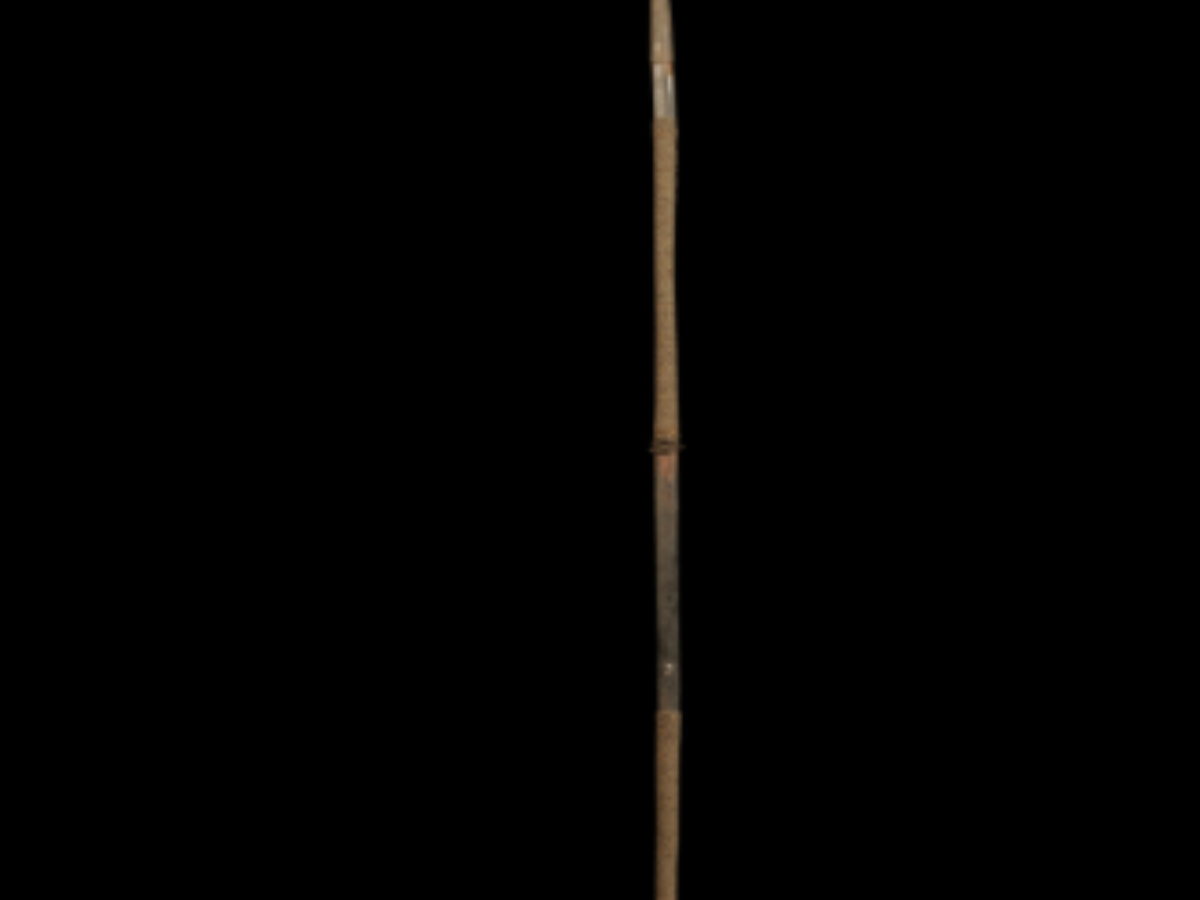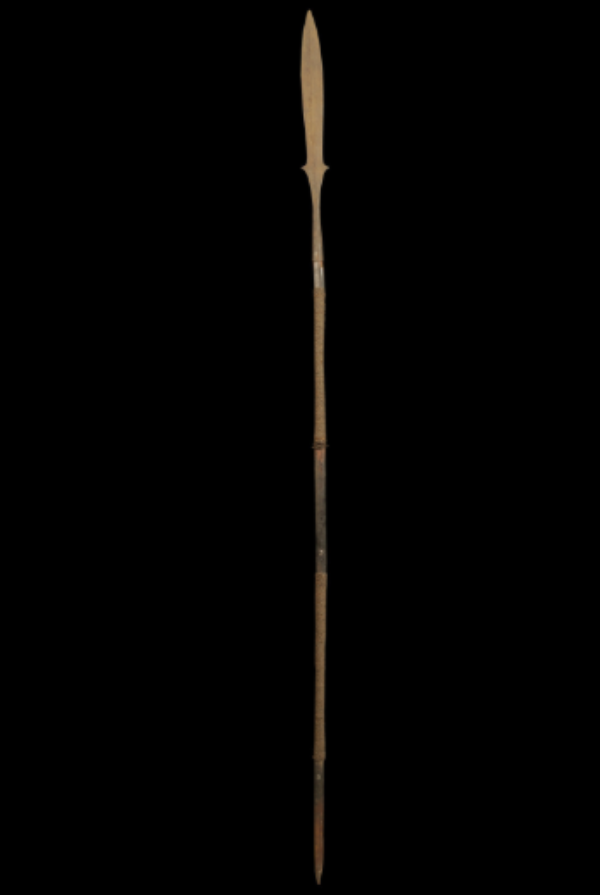State
Tribe Name
Art Type
short description
The iron spear typifies one such traditional weapon, a tool, and pageantry for the tribal people. The spear itself is characterized by a long, leaf-shaped iron head that is ridged on both sides with two pointed barbs to enhance penetration and grip on the target. The very tip of the spearhead is slightly deflected or blunt, most likely to suggest that it has greater ceremonial or symbolic than lethal significance-in other words, it's a weapon for ritualized combat. Its shaft consists of a long strip of bamboo, flat, thick, and wide, that grows pretty almost everywhere in this region but is popularly acknowledged for its flexible strength.
Thumbnail

Filter Postion
Left
Filter Background
Off
Theme
Filter Header Image

content
Image

description
The iron spear typifies one such traditional weapon, a tool, and pageantry for the tribal people. The spear itself is characterized by a long, leaf-shaped iron head that is ridged on both sides with two pointed barbs to enhance penetration and grip on the target. The very tip of the spearhead is slightly deflected or blunt, most likely to suggest that it has greater ceremonial or symbolic than lethal significance-in other words, it's a weapon for ritualized combat. Its shaft consists of a long strip of bamboo, flat, thick, and wide, that grows pretty almost everywhere in this region but is popularly acknowledged for its flexible strength.
The iron head fits over a cylindrical socket, with the shaft being secured with bark threads wound around its entire length at two different places; a technique that aids in providing both the strength and the grip to the weapon. The lower end of the shaft is tapered and slightly pointed, perhaps for ease of handling or even for planting it into the earth in rituals. Traditionally, this spear was used for warfare, hunting, and ceremonial purposes, and thus symbolized power, honor, and identity for the tribe (Hutton, 1921; Ao, 2002). Nowadays, they are found preserved as cultural relics of Naga heritage in places like the Indian Museum in Kolkata.
The iron head fits over a cylindrical socket, with the shaft being secured with bark threads wound around its entire length at two different places; a technique that aids in providing both the strength and the grip to the weapon. The lower end of the shaft is tapered and slightly pointed, perhaps for ease of handling or even for planting it into the earth in rituals. Traditionally, this spear was used for warfare, hunting, and ceremonial purposes, and thus symbolized power, honor, and identity for the tribe (Hutton, 1921; Ao, 2002). Nowadays, they are found preserved as cultural relics of Naga heritage in places like the Indian Museum in Kolkata.
Image Mode
landscape
promoted
On
Verified
Off
